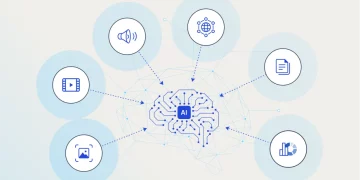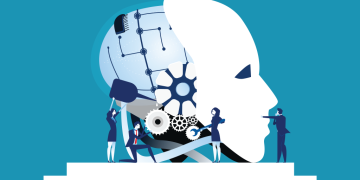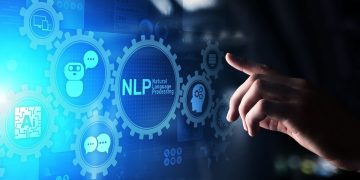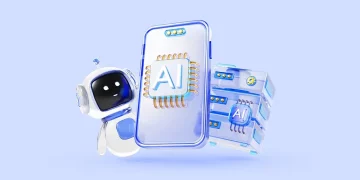Introduction
The rapid advancement of Artificial Intelligence (AI) has opened up a world of possibilities for individuals and businesses alike. Whether you’re a developer, entrepreneur, or simply a curious learner, AI tools can significantly enhance productivity, streamline workflows, and unlock new efficiencies. However, with so many options available, knowing how to fully leverage these tools can be a challenge. The key is not just to adopt AI but to maximize its potential.
In this article, we’ll explore practical tips and best practices for effectively using AI tools to achieve faster results, optimize workflows, and enhance your productivity. These strategies are tailored for both beginners and seasoned professionals looking to get the most out of their AI investments.
1. Understand the Capabilities and Limitations of AI Tools
1.1 Know What AI Can Do (and What It Can’t)
Before diving into AI tools, it’s crucial to understand their core capabilities and limitations. AI tools, while incredibly powerful, are not infallible. Knowing what AI excels at will help you apply it effectively and avoid frustration when it doesn’t perform as expected.
AI Strengths:
- Automation of repetitive tasks: AI can handle mundane, repetitive tasks like data entry, categorization, and simple decision-making processes.
- Data analysis: AI excels at analyzing large datasets, uncovering patterns, and making predictions based on historical data.
- Natural language processing (NLP): AI can read, understand, and generate human language, making it ideal for tasks like sentiment analysis, chatbots, and content generation.
- Image and voice recognition: AI tools can identify and classify images and sounds, allowing you to automate processes such as facial recognition or audio transcription.
AI Limitations:
- Lack of creativity: While AI can suggest solutions based on patterns, it often lacks the creativity that humans bring to problem-solving.
- Dependence on quality data: AI systems are only as good as the data they are trained on. Poor data leads to inaccurate predictions or unreliable results.
- Interpretability: Many AI models, especially deep learning models, can be “black boxes”, meaning they make decisions without providing transparent reasoning. This can limit trust in critical applications like healthcare or finance.
Tip: Align AI tools with tasks they are designed for. For example, use AI for automating data processing or enhancing decision-making but avoid expecting it to replace human intuition or creativity in strategic tasks.
2. Start with the Right Tools: Choose AI Platforms Based on Your Needs
2.1 Assess Your Goals and Priorities
AI tools can serve a variety of purposes across different industries and tasks. To get the most out of AI, it’s essential to pick the right tools for your specific needs. Consider what you want to achieve and match that with the capabilities of the AI platform.
Key Areas to Consider:
- Natural Language Processing (NLP): If your work involves text analysis, content creation, or customer support, NLP tools like GPT-3, ChatGPT, or Google BERT are great options.
- Automation: If you’re focused on automating repetitive tasks, tools like Zapier, Integromat, or UiPath can help streamline your workflows.
- Data Analysis and Predictive Analytics: For data-heavy tasks, AI tools like TensorFlow, IBM Watson, or Google Cloud AI can assist with data analysis, visualization, and prediction.
- Creative Work: If you need AI for design, art, or video production, tools like DALL·E, DeepArt, or RunwayML are ideal for generating images, videos, and other creative outputs.
Tip: Start with the basics. If you’re new to AI, begin with user-friendly platforms like ChatGPT or Google AutoML, which require minimal technical expertise and provide immediate value for content generation or data analysis.
3. Use AI to Automate Repetitive Tasks
3.1 Let AI Take Over the Mundane Tasks
One of the most significant advantages of AI is its ability to automate repetitive tasks, freeing up time for more strategic activities. Whether it’s managing emails, organizing data, or generating reports, AI can take the heavy lifting off your plate.
Examples of AI Automation:
- Email Management: Tools like SaneBox or Google Smart Compose can automatically categorize emails, highlight important messages, and even generate email responses based on predefined templates.
- Task Automation: Zapier and Integromat allow you to automate workflows between apps like Google Sheets, Slack, Trello, and more, without writing a single line of code.
- Document Management: DocuSign uses AI for electronic signatures, document tracking, and verification, eliminating manual document handling.
Tip: Identify the repetitive tasks in your daily workflow and use AI to handle them. Automating these processes can significantly reduce your workload and increase your productivity.
4. Integrate AI into Your Daily Workflow: Keep It Seamless
4.1 Make AI a Natural Part of Your Routine
AI should be integrated into your daily workflow in a way that feels seamless. Tools like AI-driven assistants and smart integrations can help make this transition easier.
Examples of Seamless AI Integration:
- Voice Assistants: Google Assistant or Amazon Alexa can help you manage schedules, set reminders, or provide information on the fly, saving you time.
- AI for Content Generation: Tools like Grammarly or Copy.ai use AI to improve writing quality by suggesting grammar fixes, tone adjustments, or even generating entire paragraphs of content.
- AI-powered Coding Tools: GitHub Copilot can assist developers with real-time code suggestions, helping them write more efficiently and avoid syntax errors.
Tip: Start small by integrating AI tools into one or two areas of your workflow. For instance, try using an AI-driven writing assistant or automate a single task, then gradually expand as you become more comfortable.
5. Train and Customize Your AI Tools
5.1 Personalize AI for Better Results
Many AI tools, especially those focused on machine learning and natural language processing, improve with use. You can train them or customize them to suit your specific needs. For example, customizing AI chatbots to understand your business language or training an AI model on your proprietary dataset can enhance its effectiveness.
Ways to Train AI:
- Customizable AI Chatbots: Platforms like Dialogflow or Tars allow you to train AI-powered chatbots to understand your specific business and interact with users more naturally.
- Machine Learning Models: If you’re working with data, tools like Google AutoML or Azure Machine Learning let you train custom models based on your unique datasets.
- Personalized Recommendations: Use tools like Recombee or Algolia to create personalized recommendation systems for e-commerce or content platforms.
Tip: Fine-tune AI tools based on your specific requirements. This customization helps the tool become more efficient and aligned with your goals, improving the overall quality of results.

6. Monitor and Evaluate AI Performance Regularly
6.1 Track Progress and Adapt
AI tools can become more effective over time as they learn from usage and feedback. However, it’s important to monitor and evaluate their performance regularly to ensure that they are still providing value.
How to Monitor AI Performance:
- Metrics: Track key performance indicators (KPIs) like task completion time, error rates, and user engagement to evaluate the effectiveness of AI tools.
- User Feedback: Regularly gather feedback from users interacting with AI systems (e.g., chatbots or recommendation engines) to ensure that the tool is meeting their needs.
- Adjustments: Based on performance metrics and feedback, make adjustments to your AI tools, such as retraining models or adding new features.
Tip: Test regularly. Run experiments to compare AI’s performance over time and tweak settings or datasets to improve accuracy and output quality.
7. Embrace Collaboration: AI as a Team Player
7.1 Combine Human Expertise with AI
While AI is incredibly powerful, it thrives when paired with human expertise. Using AI as a tool to complement human capabilities—rather than replace them—leads to the best results. In teams, AI can act as a collaborative assistant, supporting human creativity and decision-making.
Collaborative Use of AI:
- In Creative Industries: AI tools like RunwayML or DeepArt help designers, artists, and filmmakers by generating ideas and automating parts of the creative process, but human input is essential for final decisions.
- In Customer Service: AI chatbots can handle routine inquiries, but human agents should step in for more complex issues that require emotional intelligence or nuanced understanding.
Tip: Think of AI as a partner. Use AI to assist with tasks that can be automated or optimized, while focusing your time and energy on creative or high-level strategic tasks that AI can’t do as well.
Conclusion
Maximizing the potential of AI tools requires a combination of the right strategy, the right tools, and the willingness to experiment and iterate. Whether you’re automating routine tasks, enhancing creativity, or making better data-driven decisions, AI can supercharge your productivity and help you achieve more in less time.
By understanding the capabilities and limitations of AI, selecting the right tools, integrating them seamlessly into your workflow, and continuously monitoring and customizing their performance, you can unlock AI’s full potential. The more you work with AI, the more value you will derive, ultimately setting yourself up for success in an increasingly AI-driven world.











































